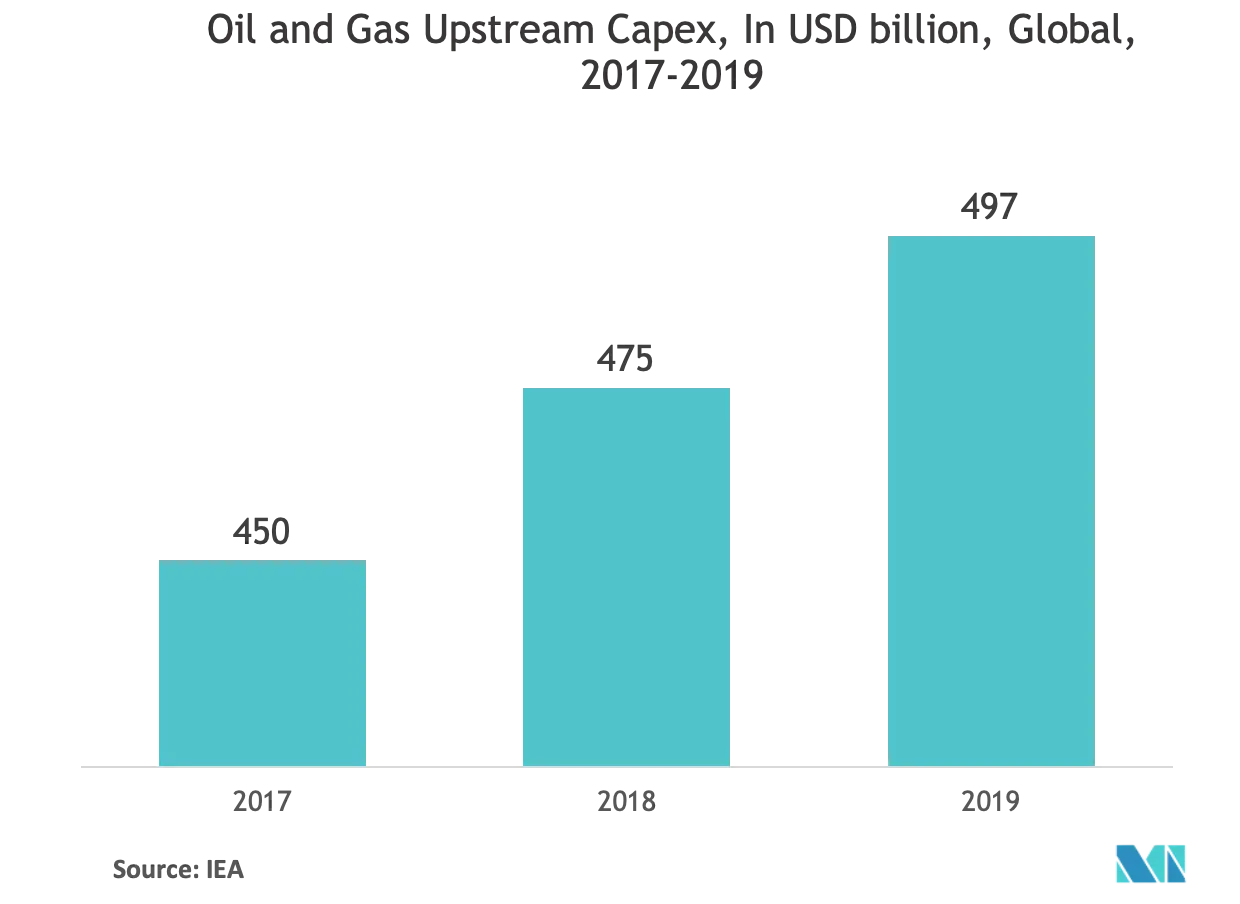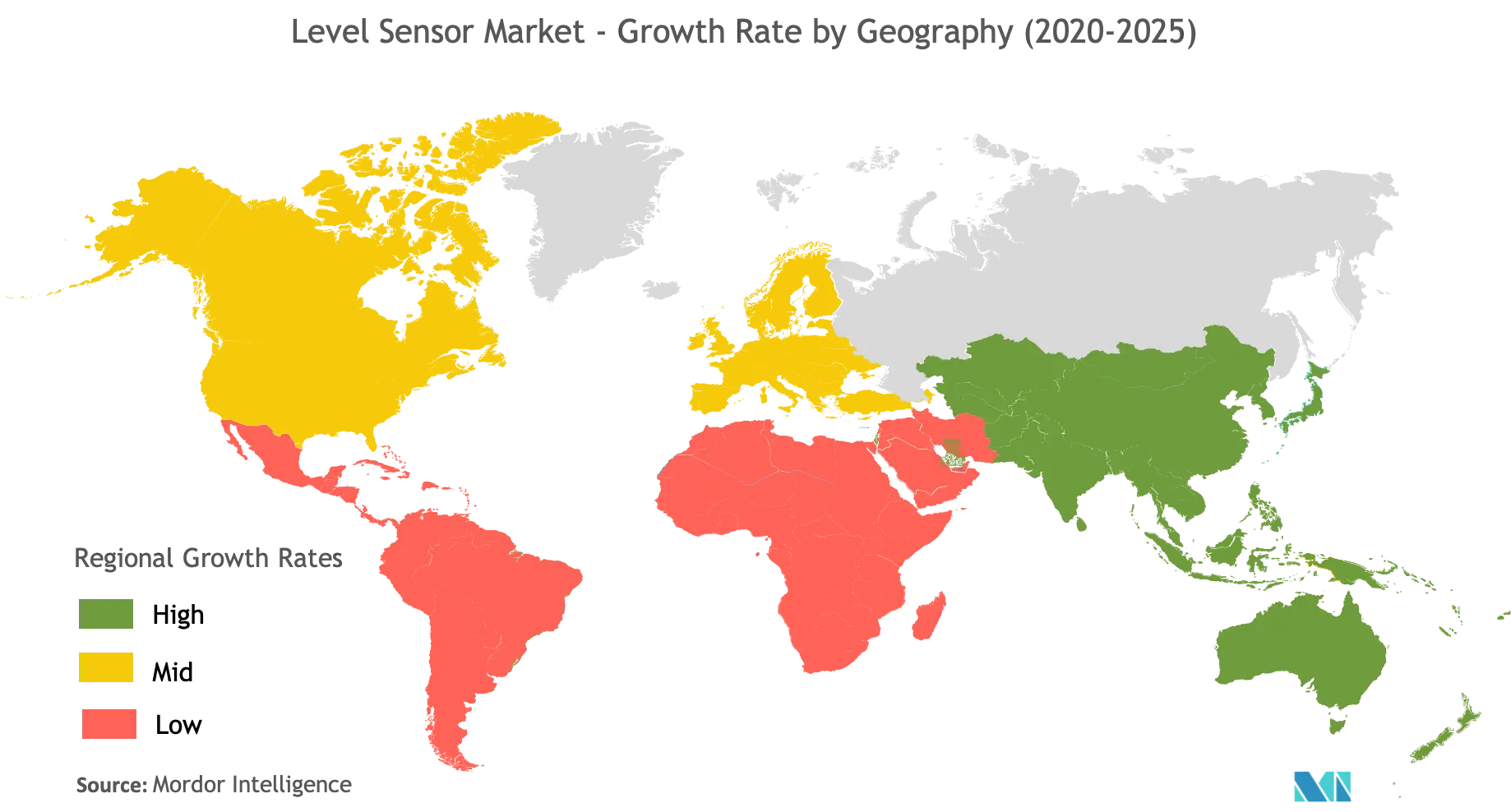Market Trends of Level Sensor Industry
This section covers the major market trends shaping the Level Sensor Market according to our research experts:
Oil and Gas Sector to be the Largest User of Level Sensors
- The oil and gas sector is one of the most significant end users of level sensors, globally. The extensive use of these sensors for monitoring storage units and downstream processing plants has maintained a constant demand for level sensors from the sector. With the growing crude oil production in some countries, such as the United States, the need for level sensors is expected to increase.
- Alternatively, as per the International Energy Agency, the Asia-Pacific region emerged as the highest importer and consumer of natural gas. China alone accounted for two-thirds of the demand for natural gas globally. The region is not joined by a high-pressure pipeline as much as the other areas, owing to which the transport is more susceptible to leakages. Thus, there is a constant requirement of monitoring during transportation.
- According to British Petroleum's Statistical Review of World Energy, 2018, more than 33% of the global refining capacity is concentrated in the Asia-Pacific region. Countries like China, India, Japan, and South Korea have the most active oil and downstream gas sectors in the region, which, together, are responsible for over 78% of the Asia-Pacific oil refining capacity region. This is suggestive of an opportunity across the creation of a new application. Furthermore, the demand from the midstream and downstream sectors is expected to increase significantly.
- In January 2020, the Union Cabinet of India approved a memorandum of understanding (MoU) on co-operation in the oil and gas sector. As part of the MoU, the two countries may focus on exploration and production (E&P) and liquefied natural gas (LNG) opportunities. Both India and Brazil may also focus on R&D in the energy sector.
- Fluid sensing in the oil and gas sector is very important. Water, chemical fluids, and oils are integral throughout the lifecycle of a well, and even more with the rising activity in drilling techniques, like hydraulic fracturing. New techniques and regulations have further added to the need for monitoring a wide range of chemicals, along with processing flow back and produced wastewater.

North America to Account for the Largest Share
- Driven by the increased investments in automation and focus on the efficiency of processes across the pharmaceutical, oil, and gas, and food processing industries, North America is expected to be the largest market.
- Several technologies are used in the North American level sensor market. The ultrasonic form is one of the most popular techniques due to the small size of sensors and mobility. The sensors are also easy to use and affordable. The sensors do not require much maintenance. The ultrasonic sensors are mainly used to measure solid substances and the ability to function in extreme conditions.
- As the US Department of the Interior’s (DoI) plans to allow offshore exploratory drilling in about 90% of the Outer Continental Shelf (OCS) acreage under the National Outer Continental Shelf Oil and Gas Leasing Program (National OCS Program) for 2019-2024, the regional oil and gas sector is expected to open up new opportunities for the level sensor market.
- Moreover, vendors in the region are investing in expanding their product portfolio to cater to the growing demands. For instance, in October 2019, OMNICOMM launched two additions to its fuel-level sensor line, namely, OMNICOMM LLS 5 and its explosion-proof version, OMNICOMM LLS-Ex 5. The portfolio features an ingress protection rating, designed for use in hazardous areas.


